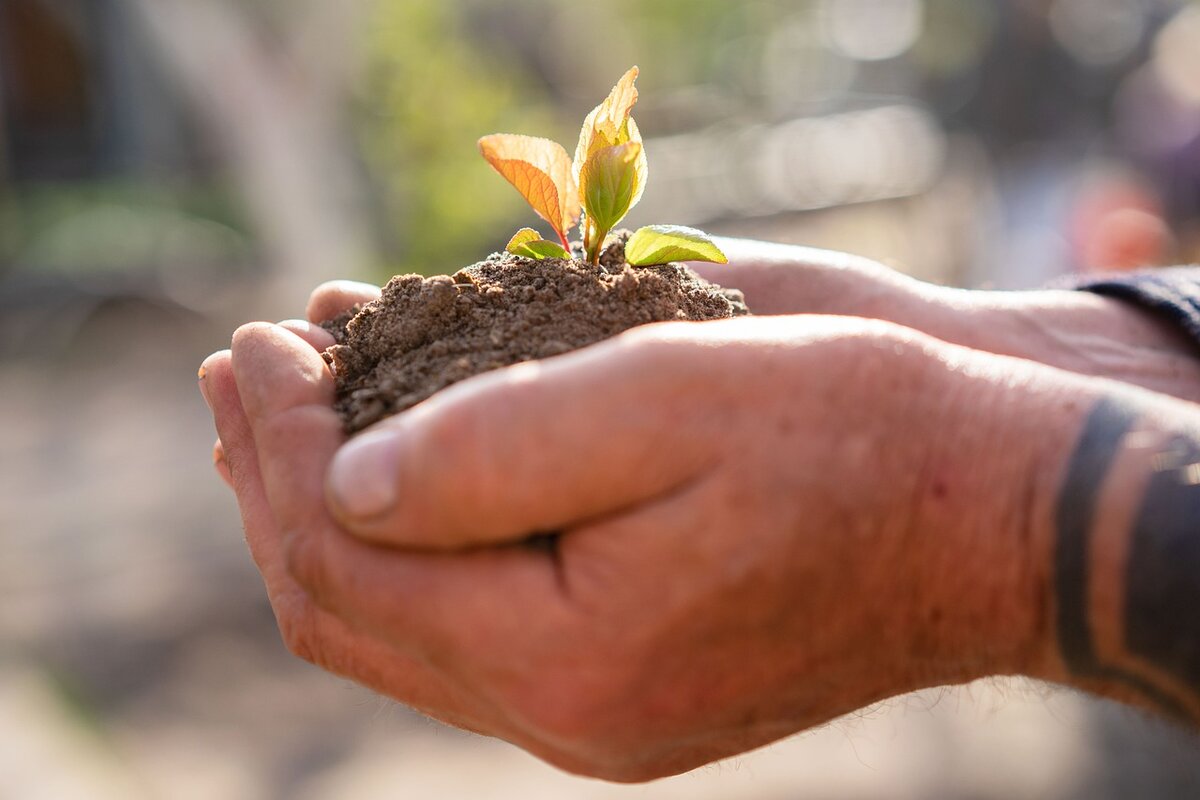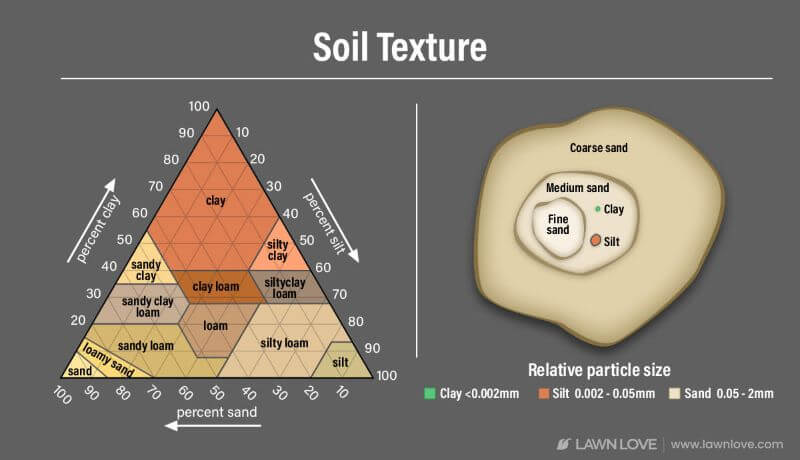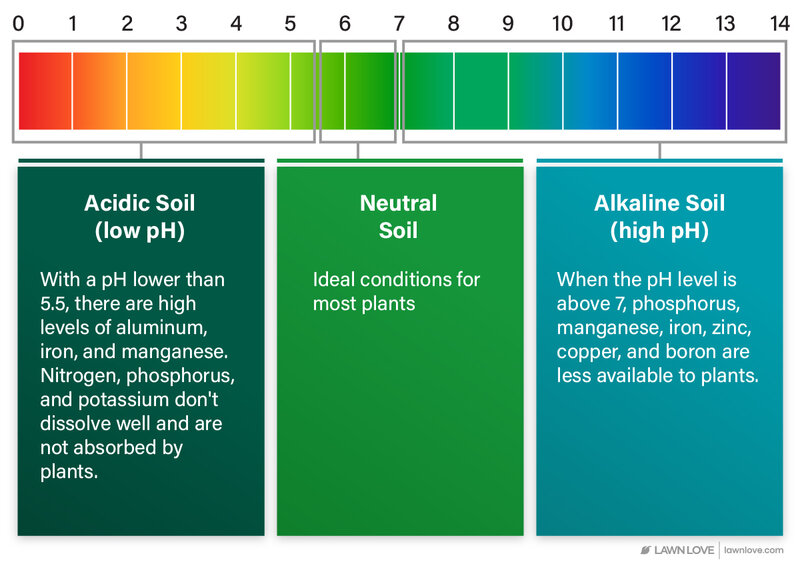
Healthy soil is the foundation of a thriving lawn and garden. But not everyone is blessed with nutrient-rich earth under their feet. That’s where the different types of soil amendments can help. A soil amendment can alter the soil’s physical properties, including texture, pH, and nutrient levels.
So, how do you determine which type of soil amendment is best for your lawn? We’ll share practical insights to simplify it for you, making the process easier to understand and implement.
Different types of soil amendments for your lawn
If you dream of having a lush, healthy lawn but aren’t doing much to keep your garden soil healthy, you’re in for an unpleasant surprise. Healthy grass and plant growth starts at the roots – or in the ground, to be exact. If your soil is in poor condition, it won’t support the lawn growth you expect.
Soil amendments can fix all that. They provide an array of benefits, including:
- Improved drainage
- Healthier grass and plants
- Increased microbial activity
- Greater nutrient absorption and retention
- More soil nutrients for your grass promote better growth
- Better moisture retention and reduced water consumption
- Amendments containing organic matter produced at home are more affordable
Organic vs. synthetic soil amendments
Before determining which amendment is best for you, you need to know what kind of soil you have. Follow these steps:
- Get a soil test to determine your soil’s pH level and nutrient content.
- Check our guide to different soil types to figure out your soil’s texture.
Next, consider these factors when selecting a soil amendment:
- Your soil’s salinity level
- The amendment’s pH and salt levels
- How often the amendment needs to be re-applied
- What type of grass or plants you want for your yard
All soil-amending materials fall into one of two categories: organic or synthetic.
Organic soil amendments come from living things, encompassing any plant matter (e.g., grass clippings) or animal byproducts (e.g., manure). They add nutrients to the soil and feed helpful microorganisms like earthworms.
Synthetic soil amendments are mined or manufactured materials, such as minerals, sand, and rubber. While these materials can improve soil texture or pH, they don’t break down and add nutrients like organic materials do.

Soil amendments to improve soil texture
Every patch of soil is made of some combination of rock particles and organic matter (also known as humus). The term “soil texture” refers to the size of these rock particles in your soil. It affects water retention, nutrient-holding capacity, drainage efficiency, and erosion resistance.
The most common soil textures are:
- Clay: Very fine rock particles that stick together to form dense soil
- Sandy: Forms loose soil with its large rock particles
- Silty: Its rock particles – smaller than sand but larger than clay – form a slippery soil
Your soil may contain mostly clay, sand, silt, or a combination of two or three of these textures. Loam is the ideal soil texture; if your soil has it naturally, you should consider yourself lucky. If not, your unbalanced soil needs the right amendments to turn it into perfect loam, with a 20-40-40 clay-to-silt-to-sand ratio.
Clay soil

Problems with clay soil: Because it’s so dense, clay soil drains poorly and becomes waterlogged easily, which can drown plants. Clay soil also becomes compacted, preventing water, oxygen, and soil nutrients from reaching plants’ roots. Compaction limits root growth, as well.
How soil amendments can help: When adding soil conditioners to mostly clay soil, the goal is to lighten and aerate the soil. You want to create space so the plant roots, water, and nutrients can move through the soil more easily.
Organic soil amendments to improve clay soil:
- Compost
- Straw
- Finely shredded bark
- Peat moss
- Composted wood chips
Synthetic soil amendments to improve clay soil:
- Pea gravel
- Perlite (a type of mineral commonly used in soil)
- Finely shredded rubber
- Gypsum (a sulfate mineral)
Warning: A common misconception is that adding sand to clay soil will loosen the texture, but don’t do it. Mixing clay and sand creates a concrete-like soil structure even worse than the clay itself.
Sandy soil

Problems with sandy soil: Sandy soil is so loose that it cannot hold water or plant nutrients for long. The water drains too quickly, leaving only dry soil for your plants, and the nutrients leach out without reaching the plants’ roots.
How soil amendments can help: With sandy soils, you want to improve the soil’s ability to hold water and nutrients. You need a soil conditioner that adds mass to the loose soil and retains moisture well.
Organic soil amendments to improve sandy soil:
- Peat moss
- Coconut coir
- Composted or aged manure
- Compost
- Worm castings
Synthetic soil amendments to improve sandy soil:
- Vermiculite (a type of mineral commonly used in soil)
Silty soil
Problems with silty soil: Soil with a lot of silt has a slippery texture that erodes easily. That means wind and rain can easily carry away the topsoil that your plants need.
How soil amendments can help: If you have silty soil, your primary concern is erosion prevention. This soil type needs modifications to make it more stable so the elements can’t quickly shift it.
Organic soil amendments to improve silty soil:
- Compost
- Composted or aged manure
- Composted wood chips
Synthetic soil amendments to improve silty soil:
- Pea gravel
- Finely shredded rubber
- Gypsum
Soil amendments to change soil pH

Soil pH has to do with the soil’s chemical makeup. Your soil’s pH level tells you if the soil is acidic, neutral, or alkaline. Here’s the breakdown of what each soil pH means:
- Acidic: pH of 0 to 6.5
- Neutral: pH of 6.6 to 7.3
- Alkaline: pH of 7.4 to 14
Soil pH affects how nutrients and minerals dissolve in the soil, influencing plants’ ability to soak up those nutrients. Some plants prefer acidic soil because of the nutrients they need, while others prefer alkaline. Generally, a pH level of 6.0 to 7.0 is ideal for most plants.
Luckily, whether your soil is too acidic or alkaline, you can use different soil amendments to alter the pH so it fits the preferred range of the plants you want to grow.
Lower soil pH
A soil pH of 7.4 or higher may be too alkaline for some plants. In alkaline soil, phosphorus is less readily available, which is a problem because phosphorus is one of the three most essential plant nutrients (along with nitrogen and potassium). Alkaline soil also may lack other important nutrients, such as iron and manganese.
If you have acid-loving plants or your soil is generally highly alkaline, you’ll need to lower the pH and make the soil more acidic.
Organic soil amendments to lower soil pH:
- Peat moss
- Ericaceous compost (compost made up of acidic materials such as pine needles, oak leaves, and citrus fruits)
Synthetic soil amendments to lower soil pH:
- Elemental sulfur
- Ammonium sulfate
- Aluminum sulfate (use sparingly to avoid aluminum toxicity)
Raise soil pH
A soil pH of 6.5 or lower may be too acidic for some plants to thrive. In highly acidic soil, nitrogen, phosphorus, and potassium don’t dissolve well for absorption. Acidic soils also contain toxic levels of metals, such as aluminum, iron, and manganese. As a result, you’ll see poor grass growth, fewer crops, and an overall deterioration of soil quality.
If your plants need alkaline soil, you can apply amendments to adjust your soil’s pH levels.
Organic soil amendments to raise soil pH:
- Wood ashes
Synthetic soil amendments to raise soil pH:
- Garden lime (agricultural lime or limestone)
- Baking soda mixture (1 tablespoon of baking soda to 1 gallon of water)
Soil amendments to add nutrients

Your soil contains many nutrients necessary for plants to grow healthy. But plants need some nutrients more than others. There are three categories of plant nutrients:
- Macronutrients: If your soil lacks any of the three essential nutrients – nitrogen, phosphorus, and potassium – you’ll have difficulty growing most plants.
- Secondary nutrients: Plants need less of magnesium, calcium, and sulfur than the primary nutrients, but they still need a significant amount.
- Micronutrients: Plants only need a minimal amount of boron, zinc, iron, manganese, chlorine, copper, molybdenum, nickel, and cobalt.
Remember to check your soil’s nutrient levels by conducting a soil test. If you can’t use an at-home testing kit, send a sample to your local cooperative extension office. A lab soil test is typically more accurate than a testing kit.
Soil amendments to increase nitrogen in the soil:
- Composted or aged manure
- Alfalfa meal
- Blood meal
Soil amendments to increase phosphorus in the soil:
- Bone meal
- Rock phosphate
Soil amendments to increase potassium in the soil:
- Greensand (aka glauconite, a sediment from the ocean floor)
- Wood ashes
- Gypsum
- Kelp or seaweed
Soil amendments with high salt content
Beware that some soil amendments are high in salts. Too much salt can dry your soil or burn your grass and plants.
If your soil is already high in salts, avoiding salty soil amendments altogether is best. If your soil has no salt problem, you should still use these amendments in moderation.
Common soil amendments that increase soil salinity:
- Manure
- Biosolids (byproducts of sewage treatment)
- Gypsum
- Sulfur
- Baking soda
How to add soil amendments

Here are some general tips for adding soil amendments to your soil:
- Pour the recommended amount of the soil amendment (varies by type) on top of the existing soil in an even layer.
- Use a garden fork or spade to mix the amendment into the top 6 to 8 inches of the existing soil.
- Immediately after amending, water the soil thoroughly.
- Wait at least two weeks before planting anything in the amended soil.
When to amend the soil
Most soil amendments take time to affect the soil significantly. For best results, add amendments in the fall and let them break down into the soil for several months before you plant in spring.
How much soil amendment to use
Each type of soil amendment has its own recommended application rate, or how much of it you should apply per square foot, 10 square feet, 100 square feet, or whatever the measurement is.
Check the package of your soil amendment for the recommended application rate and calculate how much you need using the square footage of the area you’re going to amend.
For example, the recommended application rate of garden lime is about 50 pounds per 1,000 square feet. Let’s say your lawn is 2,000 square feet, and you want to amend the soil in the whole lawn. Because 2,000 square feet is twice the size of 1,000 square feet, you would multiply 50 pounds by 2 to calculate that you need 100 pounds of garden lime.
How to amend the soil in an existing garden
Adding soil amendments to an existing garden differs from the above process because the plants and their roots will be in the way. In an existing garden, homeowners “topdress” the soil instead of digging several inches deep.
To topdress the soil in an existing garden:
- Spread a thin layer of the soil amendment on top of the soil (about ½ inch to 2 inches).
- Scratch the soil amendment into the top inch or top few inches of the existing soil using a garden fork or spade.
- Be careful scratching around the base of your plants so as not to damage the roots.
- Water well.
FAQ about the different types of soil amendments
What’s the difference between soil amendments and mulch?
Soil amendments and mulch seem similar because they benefit the soil and can be either organic or synthetic. But mulch and soil amendments serve different purposes:
- Soil amendments are mixed into the soil to change its physical properties.
- Mulch sits on top of the soil to suppress weeds and help retain moisture. Organic mulch, like sawdust, breaks down into the soil over time to add nutrients, but in smaller quantities than soil amendments.
What’s the best type of soil amendment?
Organic matter is the best all-around soil amendment regardless of your soil type. Apply the right amount, and watch your soil and grass transform right before your eyes.
Can I use multiple amendments simultaneously?
Yes, but it’s essential to understand the specific needs of your soil and avoid overdoing it.
Healthy soil is only the beginning
Ensuring a flourishing lawn and garden goes beyond cultivating healthy soil – it’s an ongoing process. Once you’ve used any of the different types of soil amendments to improve your soil, you still have a lot left to do to keep your grass and plants growing strong, including lawn mowing, watering, fertilizing, dethatching, winterizing, and aerating your lawn.
If all this sounds exhausting, let a dedicated local pro handle some (or all) of the work. Then you can spend your free time doing what you enjoy.
Main Photo Credit: VisionPics | Pixabay